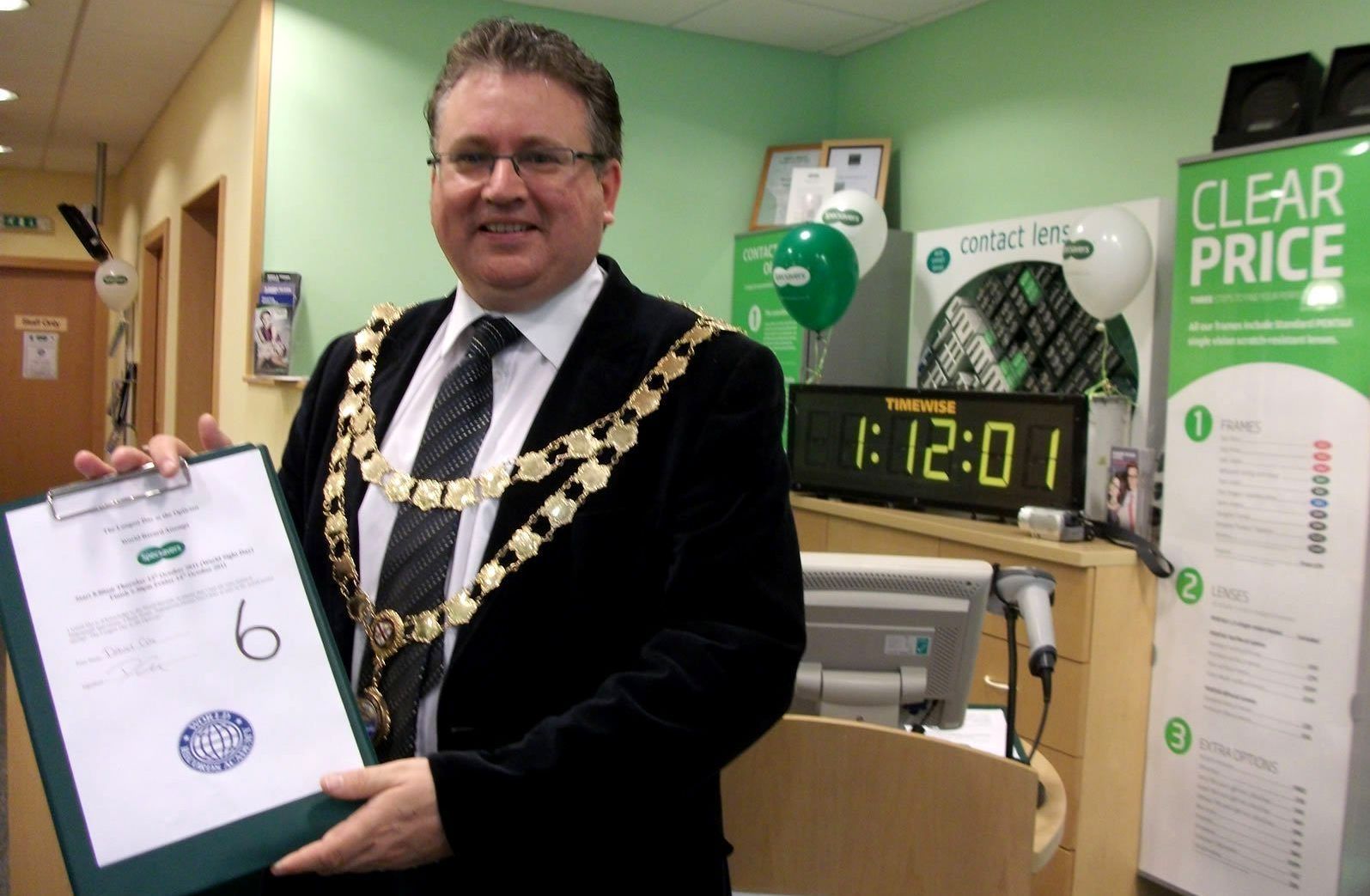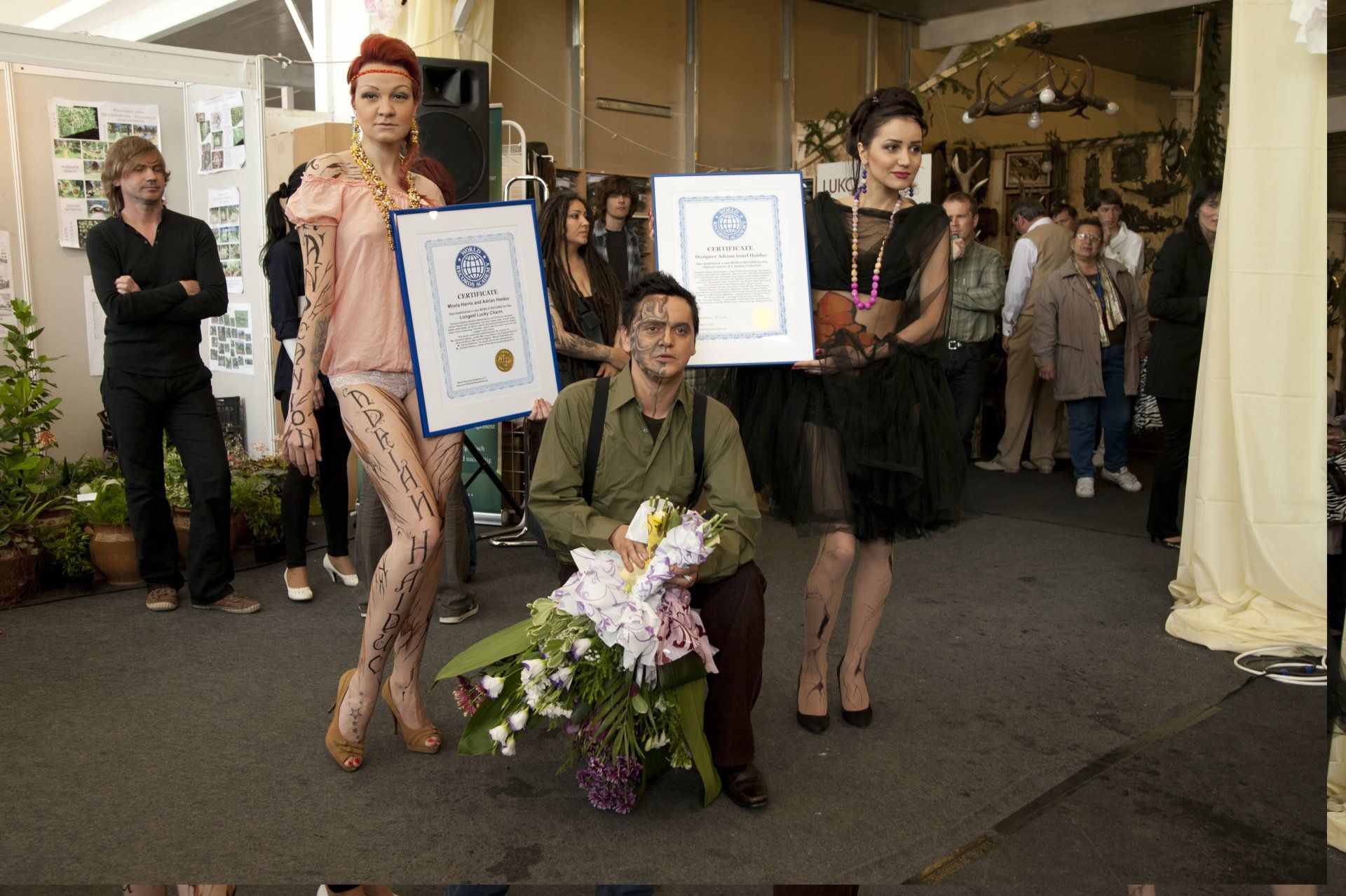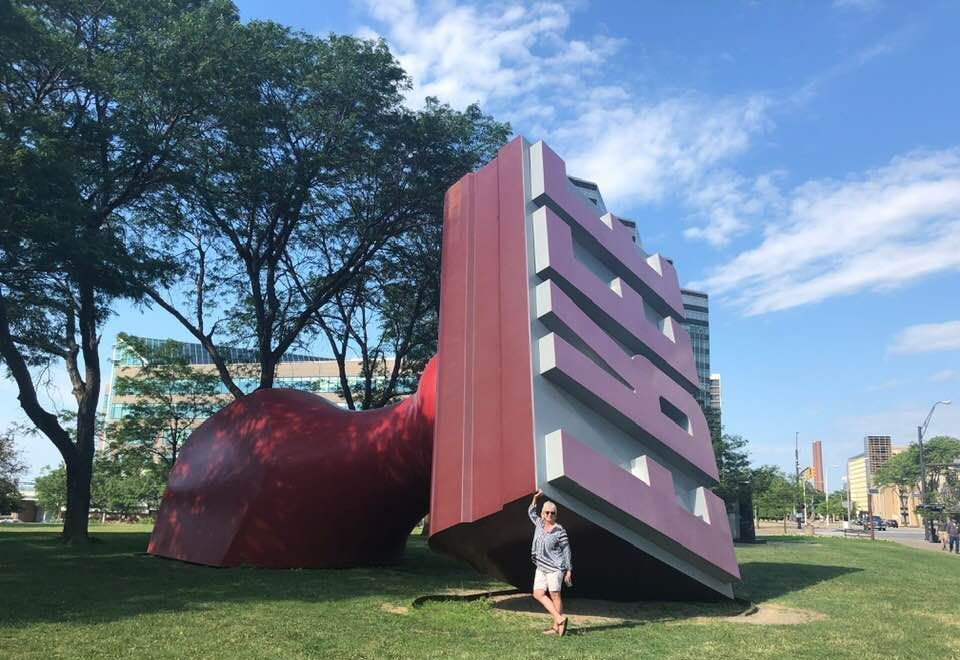World’s Largest Collection of Fluorescent Rocks: world record in Ogdensburg, New Jersey
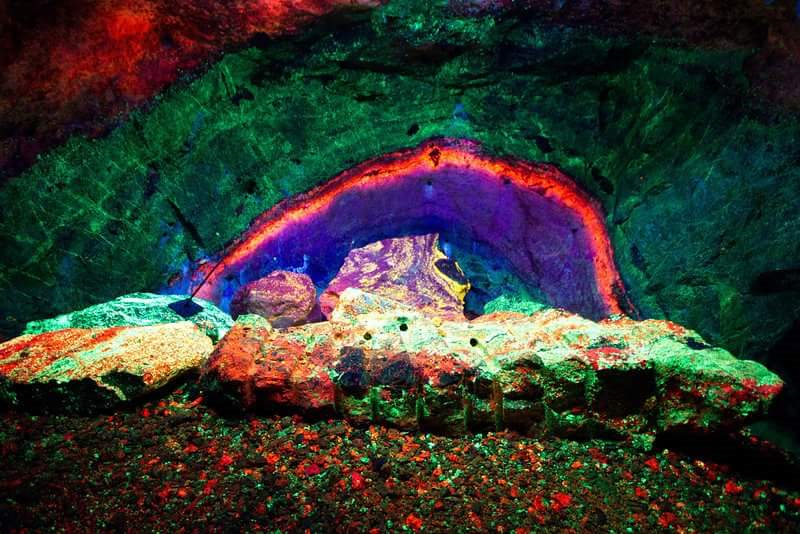
Ogdensburg, New Jersey, United States--The Sterling Hill Mine, now known as the Sterling Hill Mine Tour & Museum of Fluorescence, a former iron and zinc mine in Ogdensburg, Sussex County, New Jersey, United States, has 1,800 square feet of display space, with more than two dozen exhibits—some of which you can touch and experience on your own; more than 700 objects are on display in the museum, which sets the world record for the World’s Largest Collection of Fluorescent Rocks (World's largest publicly displayed collection of fluorescent rocks), according to the WORLD RECORD ACADEMY.
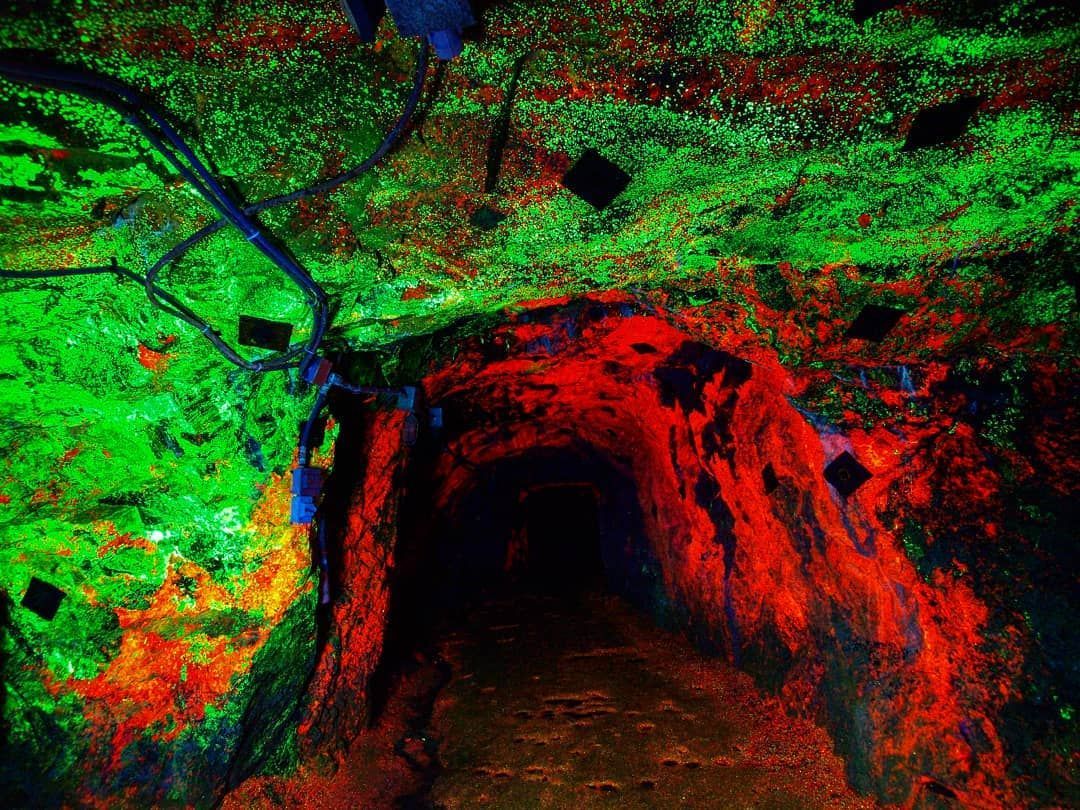
"Enter an authentic zinc mine, with mining dioramas around every corner. Where "Zoolander" was filmed. Includes the Thomas S. Warren Museum of Fluorescence, which has the world's largest display of fluorescent rocks," the Roadside America reports.
"Plan at least two hours for the tour. The mineral collecting section isn't that great, but they have a fantastic gift shop with tons of great specimens. The fluorescent rock selection was great. There was nothing about Zoolander on our tour. Very limited hours - tours are only at 10 and 1. You cannot go to the museum without the tour. Since the tour is 2 hours, it means you will not have time for mineral collecting after if you do the 1 pm."

"The Sterling Hill Mining Museum in Ogdensburg, New Jersey, is a must-visit for anyone interested in fluorescent minerals. It is located near the town of Franklin, which was named “The Fluorescent Mineral Capital of the World” in 1968 and is considered the ultimate locality for fluorescent minerals," the Rock & Gem reports.
"The Sterling Hill Mine was once an internationally renowned zinc mine with one of the world’s richest zinc ore deposits. Over the 136-year period, the Sterling Mine was in operation, it mined 11 million tons of ore, twenty percent of which was zinc. The zinc from this area was unparalleled in its richness and purity. Zinc is essential in many industries including cars (carburetors, door handles, and fuel pumps, all die-cast parts made of zinc, and tires), ceramics and footwear.
"Overall, the Sterling Hill Mine has 35 miles of tunnels with limited public access. Visitors can get a glimpse into the mine and view the historic mining machinery and equipment. There is a demonstration of drilling and blasting. The "Rainbow Room” is a photographer's delight where visitors can see fluorescent minerals in the underground mine walls."
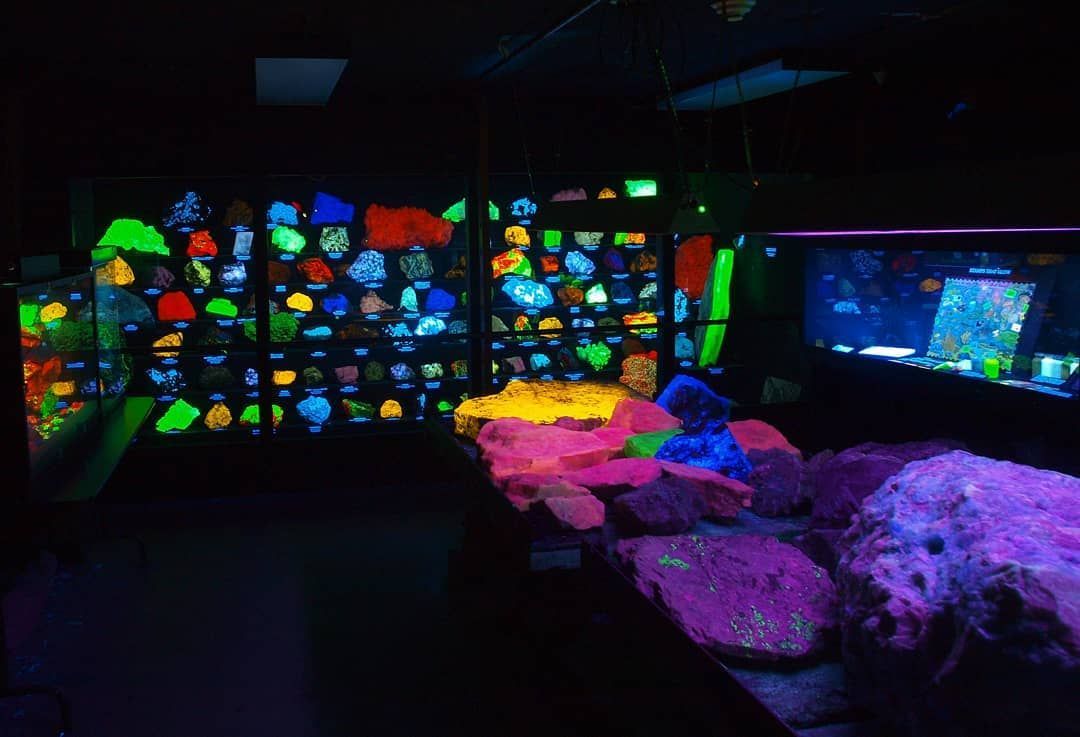
"The museum was started by brothers Richard and Robert Hauck in 1990 in the shuttered Sterling Hill zinc mine, which had closed three years earlier. The mine was one of the oldest in the United States and began operation around 1739, and over its lifespan, it produced more than 11 million tons of zinc ore. When it closed, it was the last operating mine in the state of New Jersey," the Atlas Obscura reports.
"Today the mine welcomes thousands of visitors into its depth each year to witness, among other things, its striking collection of more than 700 fluorescent objects. These objects—all able to glow under ultraviolet light, X-rays, or electron beams—illustrate a phenomenon that should be pretty familiar to anyone who’s had a black-light poster. The displays feature minerals, fossils, crystals, glass, fabric, and concrete, among others, all lit by ultraviolet light to show their glowing qualities.
"The museum created a special wing known as the Thomas S. Warren Museum of Fluorescence to house its glowing collection. It is named in honor of Thomas S. Warren, an ultraviolet researcher, and designer of the mineralight, a portable black-light lamp. The mine was placed on both the New Jersey Register of Historic Places and the National Register of Historic Places in 1991."
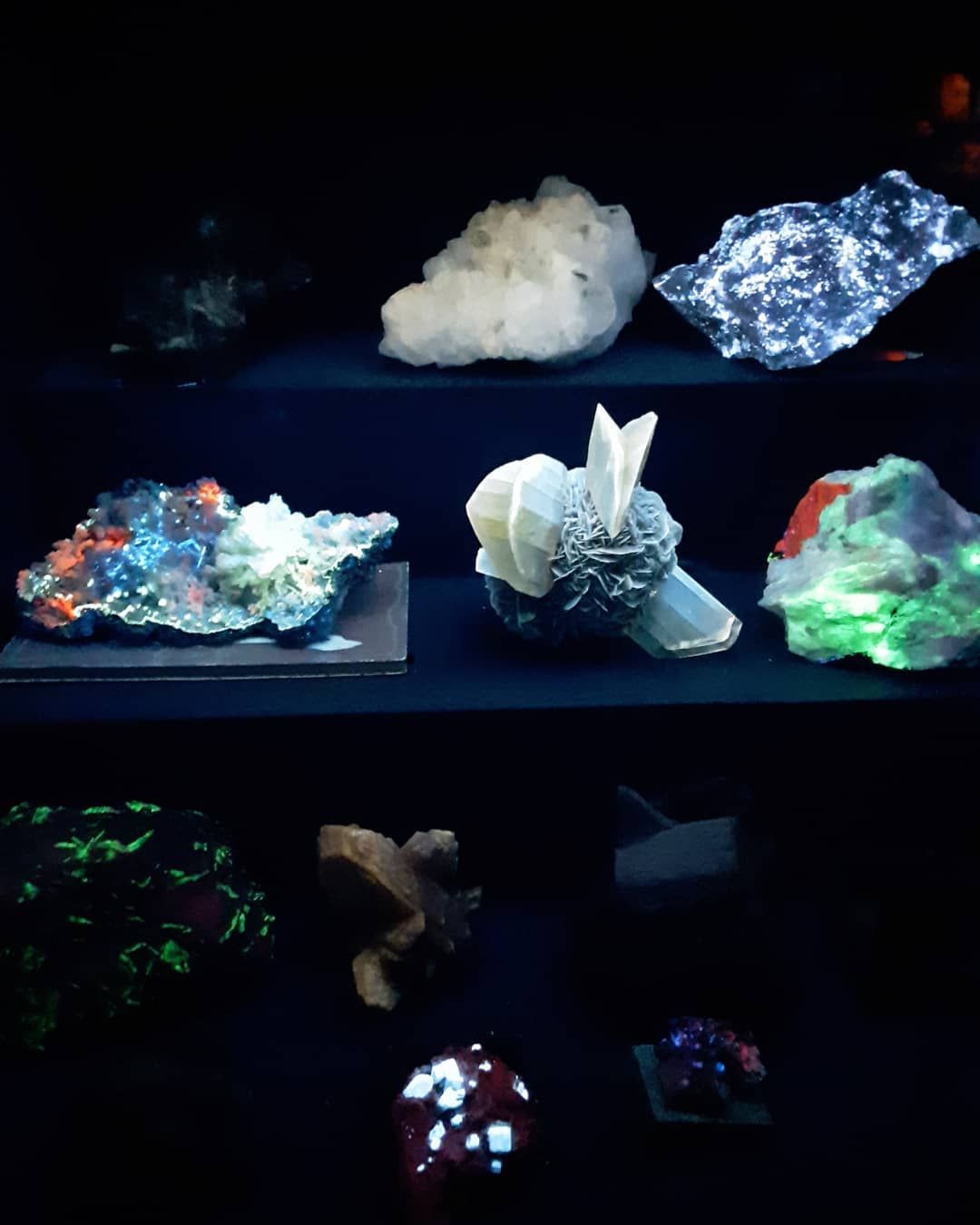
"The Sterling Hill Mine, now known as the Sterling Hill Mine Tour & Museum of Fluorescence, is a former iron and zinc mine in Ogdensburg, Sussex County, New Jersey, United States. It was the last working underground mine in New Jersey when it closed in 1986, and it became a museum in 1989. Along with the nearby Franklin Mine, it is known for its variety of minerals, especially the fluorescent varieties. It was added to the National Register of Historic Places in 1991.
"There are 35 miles (56 km) of tunnels in the mine, going down to 2,065 feet (629 m) below the surface on the main shaft and 2,675 feet (815 m) on the lower shaft. As of 2017, other than the very top level of the mine (<100 ft), the entire lower section has been flooded due to underground water table and hence no longer accessible. The mine remains at 56 °F (13 °C) constantly.
"The tour spends about 30 minutes inside the Exhibit hall which contains a wide variety of mining memorabilia, mineralogical samples, fossils, and meteorites. It then leads into the mine for a 1,300 feet (400 m) walk on level ground through the underground mine. The walk goes through a new 240 feet (73 m) section called the Rainbow tunnel which they blasted in 1990 using 49 blasts and at a cost of $2 a foot. In the Rainbow room, short wave UV lights are turned on to demonstrate the entire tunnel and various samples glowing with fluorescence." (Wikipedia)

"The Sterling Hill Mining Museum is known to have the
world’s largest publicly displayed collection of fluorescent rocks—ones that beam bright neon colors under certain types of light. The museum is an old zinc mine—one of the oldest in the country, having opened in 1739 and in operation until 1986, during which time it was an important site for hauling out zinc, as well as iron and manganese. The abandoned mine was purchased in 1989 and converted to a museum in 1990, and now welcomes about 40,000 people every year. The museum itself includes both outdoor and indoor mining exhibits, rock and fossil discovery centers, an observatory, an underground mine tour and the Thomas S. Warren Museum of Fluorescence, devoted to the glowing minerals," the
Smithsonian Magazine reports.
"The fluorescence museum occupies the mine’s old mill, a structure dating to 1916. There’s about 1,800 square feet of space, with more than two dozen exhibits—some of which you can touch and experience on your own. Even the entrance is impressive; more than 100 huge fluorescent mineral specimens cover an entire wall that’s lit up by different types of ultraviolet light, displaying the glowing capabilities of each mineral type. For kids, there’s a “cave,” complete with a fluorescent volcano, a castle and some glowing wildlife. And there’s an exhibit comprised solely of fluorescent rocks and minerals from Greenland. All told, more than 700 objects are on display in the museum
"About 15 percent of minerals fluoresce under blacklight, and they generally don’t glow in the daytime. Essentially, ultraviolet light shining on these minerals is absorbed into the rock, where it reacts with chemicals in the material and excites the electrons in the mineral, thus emitting that energy as an outwardly glow. Different types of ultraviolet light—longwave and shortwave—can produce different colors from the same rock, and some rocks that have other materials inside them (called activators) may glow multiple colors."
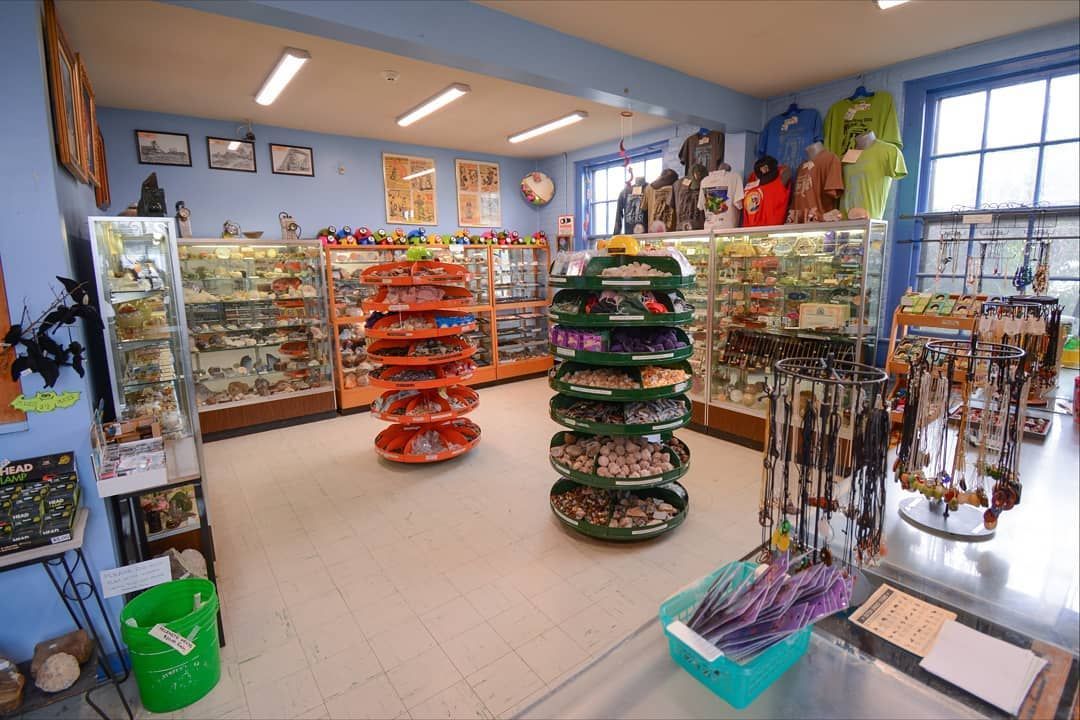
Testimonials from TripAdvisor
"We did the mine and museum tour, which was a very interesting and unique experience. The fluorescent rock displays were very cool - something the kids will like too. Tour guides were very informative. The museum had a lot of great stuff in it too."
"This is an incredibly interesting and amazing place to see and learn about mining and the fascinating ore body right here in Ogdensburg, NJ."
"Had a great time on my 65th birthday weekend collecting minerals and taking the informative 2 hour mine and museum tour. Great gift shop, too."
"The history and presentation of this long defunct mine is fascinating and very well done! Really cool gift shop and small snack bar too. It is alot of walking, so wear old shoes and a hat. It drips in the mine! You can also don headgear and safety glasses and go hunt for stones. Then, "pan" for gems at the sluice. Also, the fluorescent stones under a black light in the museum are just amazing! Nominal fee for entry. Really enjoyed The Sterlinghill Mine Museum!"
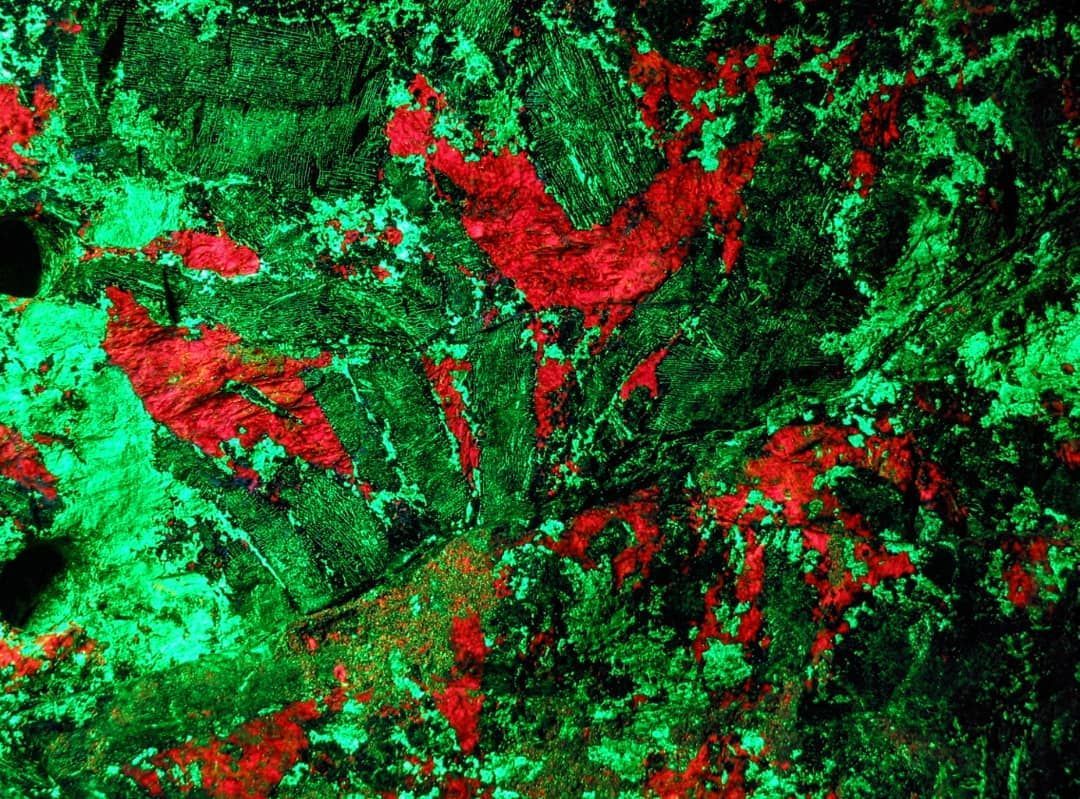
World’s Largest Fluorescent Rock: Ogdensburg, New Jersey
Address: 30 Plant St., Ogdensburg, NJ
GPS: 41.0828, -74.6044
Facebook:
The Sterling Hill Mining Museum
Directions: Sterling Hill Mining Museum. Just south of the Franklin Mineral Museum. Proceed west on Hwy 80 past Denville to exit 34B (Hwy 15 N.). Take Hwy 15 to the second Sparta exit (Franklin-Sparta) for Hwy 517 N. Follow Hwy 517 for 2.5 miles to Ogdensburg. In Ogdensburg, at Brooks Flat Rd, is a brown sign for the Sterling Hill Mining Museum on the left (west) side of the road; turn left here. Proceed down the hill for a half-mile and turn right on Plant St. Follow Plant St. one mile to the stop sign and turn left, then immediately left again into the Sterling Hill Mining Museum entrance.
Phone: 973-209-7212
website: https://www.sterlinghillminingmuseum.org/
Admission: Adults $13, Kids $10, Addtl fee for Mine Collecting, Rock Discovery Center
